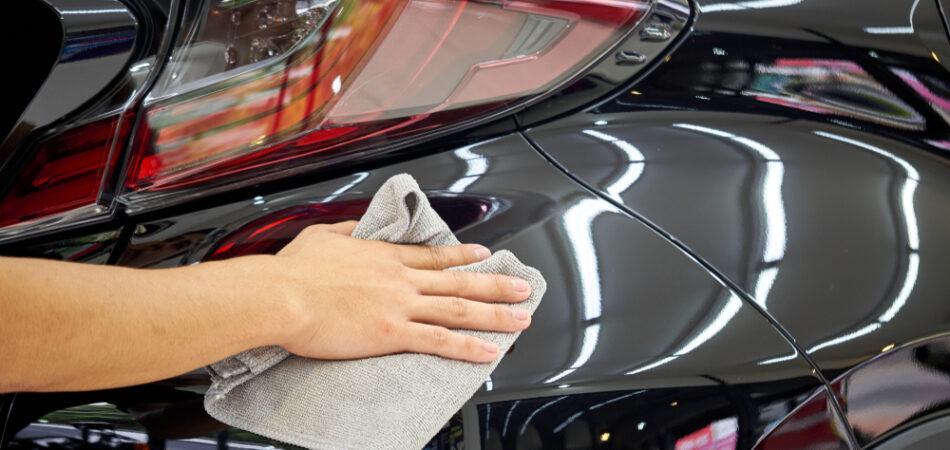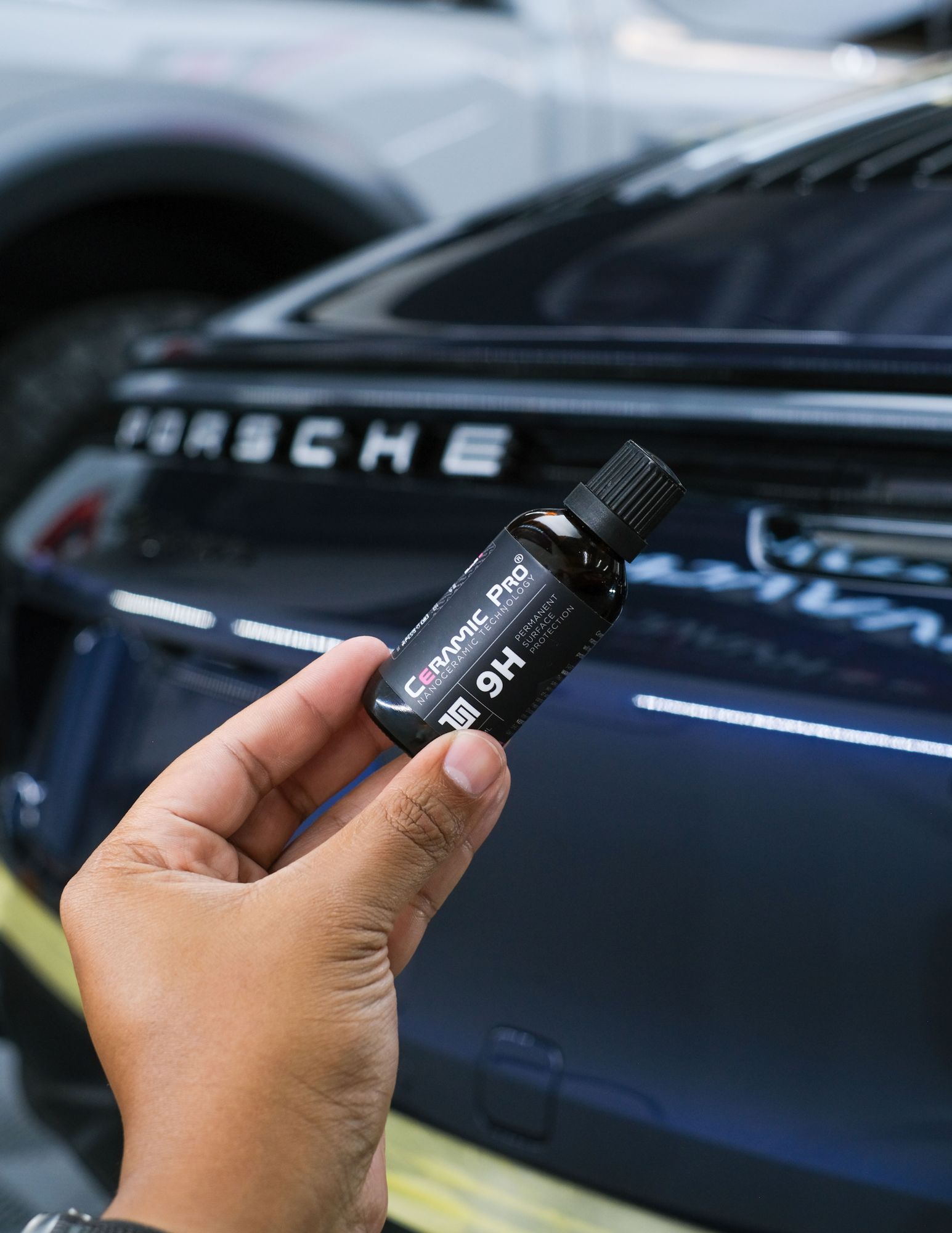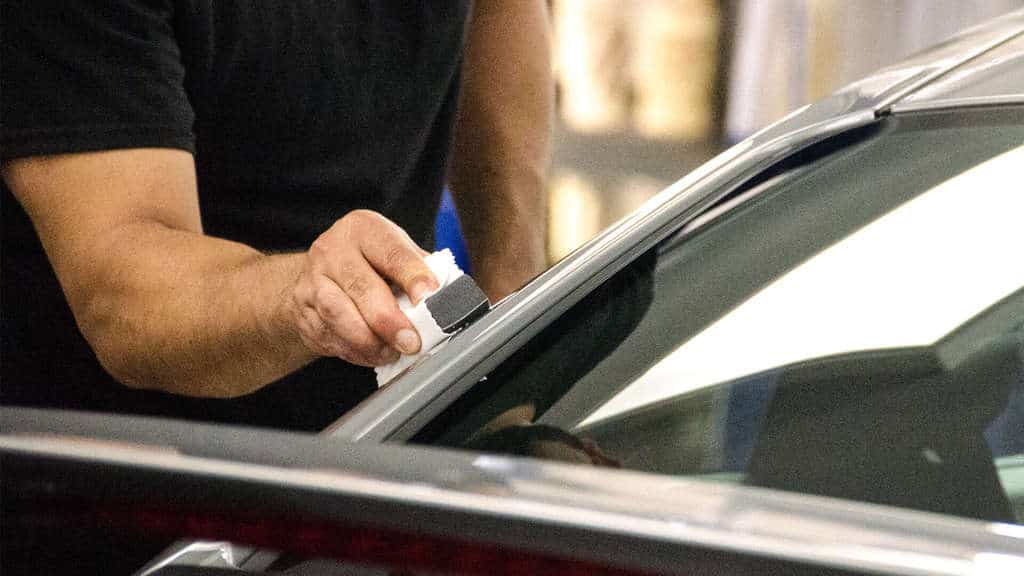Ceramic Finish vs. Typical Wax: Which Supplies Better Long-Term Security?
The dispute in between ceramic finishings and standard wax for car protection has actually gathered considerable interest amongst auto enthusiasts and experts alike. While both satisfy of securing paint, their differences in resilience, application, and long-term maintenance prices may affect a consumer's selection. Ceramic coverings boast exceptional longevity and resistance to ecological elements, yet the intricacy of their application elevates questions concerning accessibility and usefulness. As we explore these contrasting alternatives, it ends up being important to think about not just the prompt advantages but additionally the effects for automobile care in time.
Review of Ceramic Layer
Ceramic covering has obtained considerable appeal amongst automotive enthusiasts and detailers alike because of its innovative protective qualities. This ingenious technology is made to create a durable, hydrophobic shield over a vehicle's paint surface, dramatically boosting its resistance to environmental pollutants such as dirt, UV rays, and chemical spots. Unlike conventional wax, which provides a short-term layer of defense, ceramic coatings bond at a molecular level with the paint, providing durable resilience-- usually extending beyond 2 years with correct maintenance.
The application procedure involves thorough prep work of the car's surface area, consisting of cleansing and polishing to make certain optimum bond. Once applied, the finish cures to create a durable layer that not just includes depth and gloss to the paint however additionally simplifies upkeep. With its hydrophobic residential properties, ceramic finish allows water and dirt to move off more quickly, minimizing the regularity of laundries and decreasing the threat of swirl marks.
Furthermore, ceramic layers are readily available in different formulations, permitting customers to select items customized to their particular requirements and preferences. In general, ceramic coating represents a substantial improvement in paint security modern technology, providing exceptional efficiency contrasted to traditional alternatives.
Summary of Traditional Wax
Commonly related to as a staple in vehicle care, wax functions as a preferred option for those seeking a straightforward method to improve and safeguard their car's paint - ceramic coating. Automotive wax generally consists of all-natural active ingredients, such as carnauba, or artificial compounds, made to create a protective layer externally of the paint. This layer not only boosts the lorry's gloss and beam but also provides an obstacle versus environmental impurities
The application of wax is usually user-friendly, making it available for both professionals and do it yourself lovers. It can be applied by hand or maker, enabling adaptability in the detailing process. As soon as used, wax calls for a curing period, after which it hardens to form a protective covering. Wax is likewise understood for its capability to ward off water, advertising a beading result that helps in the prevention of water spots and corrosion.
Nevertheless, while wax is efficient for boosting the aesthetic charm of an automobile, it is very important to keep in mind that the security it provides might demand much more regular reapplication contrasted to alternate products, such as ceramic layers. On the whole, conventional wax stays a preferred choice for those prioritizing convenience of usage and prompt visual renovation.
Longevity and Long Life Contrast
While both ceramic layers and standard wax deal protective advantages for automobile paint, their longevity and longevity vary substantially. Standard wax, normally made from natural carnauba or artificial polymers, generally provides a protective layer that lasts approximately 3 to 6 months. This fairly short life expectancy requires regular reapplication to keep optimal defense.
On the other hand, ceramic coverings are engineered from innovative nanotechnology, forming a covalent bond with the paint surface. This causes a robust, hydrophobic layer that can endure for two to five years, relying on the product and ecological conditions. The remarkable longevity of ceramic coverings is connected to their chemical framework, which supplies enhanced resistance to scratches, UV rays, and oxidation.

Security Against Environmental Variables
Shielding a lorry's paint from environmental factors is essential for maintaining its appearance and value in time. Cars are constantly revealed to a range of components, including UV rays, bird droppings, tree sap, acid rain, and roadway grime, every one of which can jeopardize the stability of the paintwork.
Ceramic layers supply a durable protection against these environmental assailants. Unlike standard wax, which can break down quickly under UV exposure, ceramic finishes form a sturdy, hydrophobic layer that withstands the unsafe effects of sunshine and ecological pollutants. This innovative modern technology develops a chemical bond with the car's surface area, offering remarkable defense that lasts for several years, even in rough problems.
Standard wax, while simpler to additional hints apply, commonly calls for frequent reapplication and offers restricted resistance to impurities and UV rays. With time, it can damage down, leaving the paint vulnerable to scrapes and oxidation. On the other hand, ceramic finishings maintain their protective qualities longer, dramatically reducing the risk of paint damage and making sure that the car preserves its aesthetic allure. Consequently, ceramic coatings are progressively acknowledged as the superior option for long-lasting defense against environmental variables.
Application and Maintenance Differences
The techniques of application and succeeding maintenance for ceramic finishings and conventional wax differ significantly, affecting the total customer experience and effectiveness of each item. Ceramic finishings call for a more elaborate application procedure, commonly entailing surface area prep work that consists of cleaning, sanitizing, and polishing the car. Once the surface area prepares, the ceramic layer is used in a controlled setting, frequently needing professional expertise to guarantee proper curing and bonding to the paint.

While both items improve lorry look, the longer-lasting security offered by ceramic finishes might warrant their first investment, in spite of the even more demanding application process. Conversely, conventional wax continues to be a prominent selection for those seeking a less complex, albeit temporary, solution.

Conclusion
In verdict, ceramic coatings show significant advantages over traditional wax in regards to resilience and environmental management. With a lifespan extending two to five years and remarkable resistance to UV rays, dirt, and chemical spots, ceramic finishes offer a more reliable service for long-lasting vehicle upkeep. Although the application process may need specialist know-how, the resulting price financial savings and lowered frequency of reapplication highlight the value of ceramic finishings for those seeking optimum automobile protection.
The argument in between ceramic finishes and standard wax for vehicle protection has garnered considerable focus among automotive enthusiasts and experts alike. Unlike conventional wax, which supplies a short-term important site layer of protection, ceramic coatings bond at a molecular level with the paint, using durable sturdiness-- commonly expanding beyond 2 years with correct maintenance.
While both ceramic finishes and traditional wax offer safety benefits for auto paint, their durability and longevity vary considerably. For cars and truck lovers seeking long-lasting defense, ceramic finishes provide an engaging advantage over traditional wax products.
In final thought, ceramic coverings show significant advantages over standard wax in terms of longevity and environmental security.